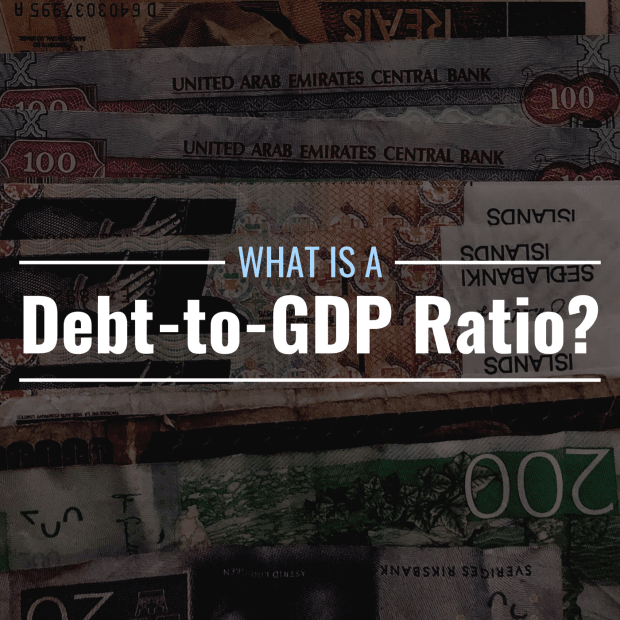What Is a Debt-to-GDP Ratio? Definition, Calculation & Importance
Just like people and businesses, countries often need to borrow money to finance projects. Almost every country in the world carries some amount of debt, but some countries owe far more than others. What Is a Debt-to-GDP Ratio? A debt-to-GDP ratio is a handy metric that analysts use to evaluate a ...


Just like people and businesses, countries often need to borrow money to finance projects. Almost every country in the world carries some amount of debt, but some countries owe far more than others.
What Is a Debt-to-GDP Ratio?
A debt-to-GDP ratio is a handy metric that analysts use to evaluate a country’s ability to pay off its debts. The ratio compares a country’s debt to its annual economic output (gross domestic product). The higher a country’s debt-to-GDP ratio, the less likely it is to be able to pay off its debts in a timely manner.
Most often, the D/GDP ratio is expressed as a percentage. If a country’s D/GDP ratio is 100%, for instance, that would mean its annual economic output is approximately equal to its public debt.
Alternatively, the D/GDP ratio can be expressed as a numeral. When looking at the metric this way, the ratio can also be thought of as the number of years it would take a country to pay off all of its debt if it used all of its GDP to do so (this would never happen in reality; it’s just another way to conceptualize the ratio). For instance, if a country had a D/GDP ratio of 1 (100%), it would be able to pay off all of its debt in one year if its entire economic output was used for that purpose.
How Is a Country’s Debt-to-GDP Ratio Calculated?
A country’s debt-to-GDP ratio is calculated by dividing its total public debt by its gross domestic product. The result can be expressed either as a percentage (more common) or a numeral (less common).
Debt-to-GDP Ratio Formula
Debt-to-GDP Ratio = Total Debt / GDP
Debt-to-GDP Example: Germany
According to worldeconomics.com, Germany’s debt totaled around $2,622 billion in 2020. In the same year, the country’s GDP was about $3,806 billion. To calculate Germany’s 2020 D/GDP ratio, simply divide the former by the latter:
Debt-to-GDP Ratio = Total Debt / GDP
Debt-to-GDP Ratio = $2,622 billion / $3,806 billion
Debt-to-GDP Ratio = 0.689 or 68.9%
So, as of 2020, Germany’s D/GDP ratio was approximately 69%.
Why Is a Country’s Debt-to-GDP Ratio Important? What Can It Tell You?
In general, the higher a country’s debt-to-GDP ratio, the more likely it is that the country could default on its debt at some point in the future. When a country does default on its debt, economic turmoil tends to ensue domestically (and internationally, depending on the degree to which the defaulting country’s economy is intertwined with other economies abroad).
The larger and more established a country’s economy—and the more it is intertwined internationally with other large economies—the more severe and widespread the economic fallout could be if a large-scale default were to occur.
Which Countries Have the Highest Debt-to-GDP Ratios?
- Japan: 237.00%
- Greece: 177.00%
- Lebanon: 151.00%
- Italy: 135.00%
- Singapore: 126.00%
- Cape Verde: 125.00%
- Portugal: 117.00%
- Angola: 111.00%
- Bhutan: 110.00%
- Mozambique: 109.00%
- United States: 107.00%
Which Countries Have the Lowest Debt-to-GDP Ratios?
- Brunei: 2.40%
- Cayman Islands: 5.70%
- Afghanistan: 7.10%
- Estonia: 8.40%
- Russia: 12.20%
- Kuwait: 14.80%
- Republic Of The Congo: 15.70%
- Palestine: 16.40%
- Libya: 16.50%
- New Zealand: 19.00%
- Nigeria: 17.50%
What's Your Reaction?



























































